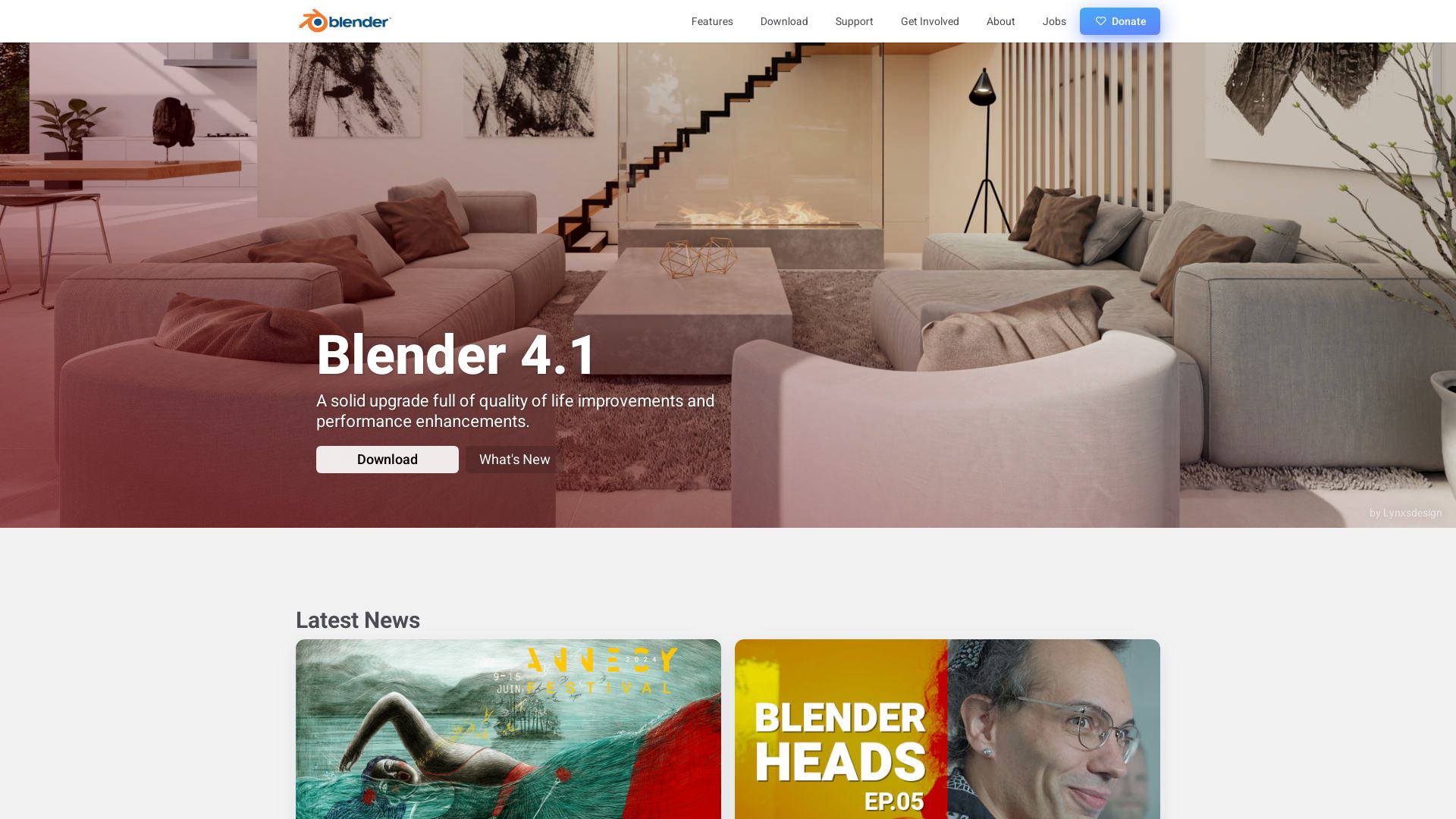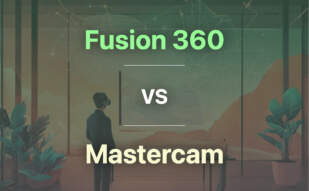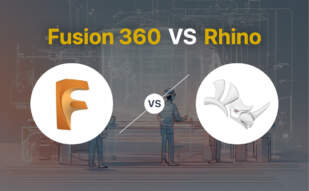Mastercam is CAD/CAM software developed by CNC Software Inc, offering advanced design tools, intelligent toolpaths, and support for multi-axis machining. It serves industries like aerospace, automotive, medical, and energy, enhancing efficiency and precision in manufacturing processes.

For those exploring alternatives to Mastercam, options encompass Fusion 360, Rhino, and Blender.
Fusion 360
Developed by Autodesk, Fusion 360 is a cloud-based platform combining CAD, CAM, CAE, and PCB design for integrated design, engineering, manufacturing, and electronics.
Fusion 360 Top Features
- Advanced 2D & 3D Designing
- PCB Layouts
- Effective Simulation Capabilities
- Realistic rendering, cooling of electronics, topology shape optimisation
- User-friendly Interface
- Cloud Integration for Streamlined Workflow
- Regular Feature Updates and Excellent Support
| COMPETITIVE PRICING | INDUSTRY USE |
|---|---|
| Affordable with an annual subscription of $545/year or $70/month | Popular choice among SMEs; used extensively in electronics, aesthetic design, and architecture fields. |
| Free limited version available for home use | Adopted by education and individual design enthusiasts |
Fusion 360 Limitations
- Potential malware risks
- Lack of personal keyboard controls
- No standalone web version available
Fusion 360 Pricing
Offered at an affordable annual subscription of $545/year or $70/month. A limited version is available for free for home use.
Fusion 360 Use Cases
Use case 1: SMEs
With its competitive pricing and comprehensive features, Fusion 360 has proven to be an effective tool for SMEs, particularly in fields of electronics, aesthetic design, and architecture.
Use case 2: Individual Design Enthusiasts
The free version of Fusion 360 serves as a great resource for individuals exploring the realm of 3D design, architecture, and more.
Use case 3: Education
Schools and colleges utilize Fusion 360 to instill practical technology skills and prepare students for their professional lives in design and engineering industries.
Rhino

An innovative solution in the realm of 3D modeling software, Rhino has etched its remarkable utility in sectors including architecture, engineering, industrial, graphic, and automotive design. The brainchild of Barcelona-based firm Robert McNeel & Associates, Rhino leverages the NURBS (Non-Uniform Rational Basis Splines) geometry to create precise surface models.
Rhino Top Features
- Creation of organic shapes through new and improved tools like SubD tools.
- Additional add-ons and algorithms for augmented functionality.
- Augments compatibility with other software through its utility as a conversion tool.
- Supports two scripting languages, Rhinoscript and Python.
- Sophisticated Rhino.Inside.Revit tool that links Rhino and Grasshopper to the Autodesk Revit environment.
| Freeform Surface Modeler | Rhino is primarily a freeform surface modeler, utilizing the NURBS mathematical model |
| Enhanced Support | Supports over 30 CAD file formats for importing and exporting |
| Extensibility | Availability of hundreds of both free and commercial plug-ins that enhance Rhino’s core functionality |
Rhino Limitations
- Not specifically designed for 3D printing- may require pre-printing optimization.
- While it allows for complexity and intricacy in design, it may present a steep learning curve to novices.
Rhino Pricing
Rhino keeps its services accessible to different audiences with diverse pricing. License pricing stands at €995 for Windows and Mac, €595 for an upgrade of the previous version, €195 for students and teachers, and €95 for upgrades for students and teachers.
Rhino Use Cases
Use case 1: Architecture
Rhino’s NURBS geometry and ability to create intricate designs makes it favored by professionals in the realm of architecture.
Use case 2: Rapid Prototyping
Through its robust conversion tools and matches for tight tolerances, Rhino excels in rapid prototyping, providing quick and accurate outcomes.
Use case 3: Product Design
Rhino offers freedom in modeling and the capacity for producing high-level 3D geometries, factors much appreciated in product design.
Blender

Pioneered in the realm of 3D computer graphics, Blender is a powerful software toolset, dense with features that breathes life into pixels and polygons. Known for its utility in creating animated films, art, and motion graphics, this free and open-source software paints with the brilliant colours of imagination onto the canvas of tech-enabled possibilities.
Blender’s Crowning Features
- 3D Modeling: The cornerstone of Blender’s functionality, offering an extensive suite of tools to transform a simple cube into a complex work of digital art.
- UV mapping & Texturing: Empowers artists by equipping them with tools to give 3D models a rich visual appearance, dipped in the hues of realism.
- Rigging and Skinning: Binds models with an invisible skeleton, allowing them to move and deform realistically, echoing the fluidity of life.
- Simulation Features: Fluid, smoke, particle, and soft body simulations breathe life into stationary objects, infusing scenes with dynamism.
- Animation: Lets artists puppeteer their models, infusing them with the breath of movement.
| Feature | Advantage |
|---|---|
| Rendering | Offers various rendering engines, widening the scope of visual possibilities. |
| Video Editing | Integrates a full-fledged video editor, enabling comprehensive multimedia production. |
| Compositing | Fuses different elements into a single image, opening doors to the creation of convincing visual effects. |
Limitations of Blender
- Steep Learning Curve: Given its extensive feature set, mastering Blender may require a considerable investment of time.
- Incompatibility with Other Software: While Blender supports various file formats, issues can arise during import/export
- Deprecation: Some legacy features like the Blender Game Engine have been removed in the recent versions
Blender Pricing
A miracle in the domain of 3D graphics, Blender is free. Its open-source nature invites the community to contribute, fostering continuous enhancement and growth.
Blender Use Cases
Animated Films
With its strong animation features, Blender serves as an excellent tool for creating short films or even feature-length animations.
Visual Effects
Celluloid or digital, Blender’s robust simulation and compositing features make it a valuable asset for creating stunning visual effects.
3D Printed Models
From hobbyists to professionals, Blender opens infinite possibilities for 3D printing enthusiasts, facilitating the design of intricate models ready for physical manifestation.
Grant Sullivan
Content writer @ Aircada and self proclaimed board game strategist by day, AI developer by night.





